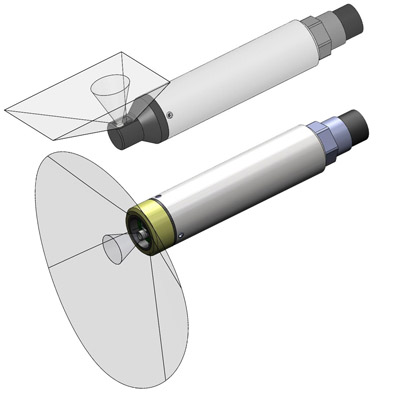Campbell Scientific will soon offer the OBS300, a turbidity probe with optics located at the end of its body. Like the OBS-3+, the new OBS300 uses the innovative optical backscatter method for monitoring suspended sediment and turbidity. With this method, the probe uses its optics to emit a near-infrared light into the water. It then measures the light that bounces back from the water’s suspended particles. If an obstruction is in the emitted light’s range, the light will scatter back and the turbidity reading will be too high.

The location of the OBS300 optics allows you to avoid obstructions around the sides of the probe (see graphic). The OBS-3+ has optics on the side of its body, which allows you to avoid obstructions above or below the probe.

The emitted light range of the OBS3+ (top) and OBS300 (bottom) is shown. Other than their optic's orientation, these sensors are the same.

